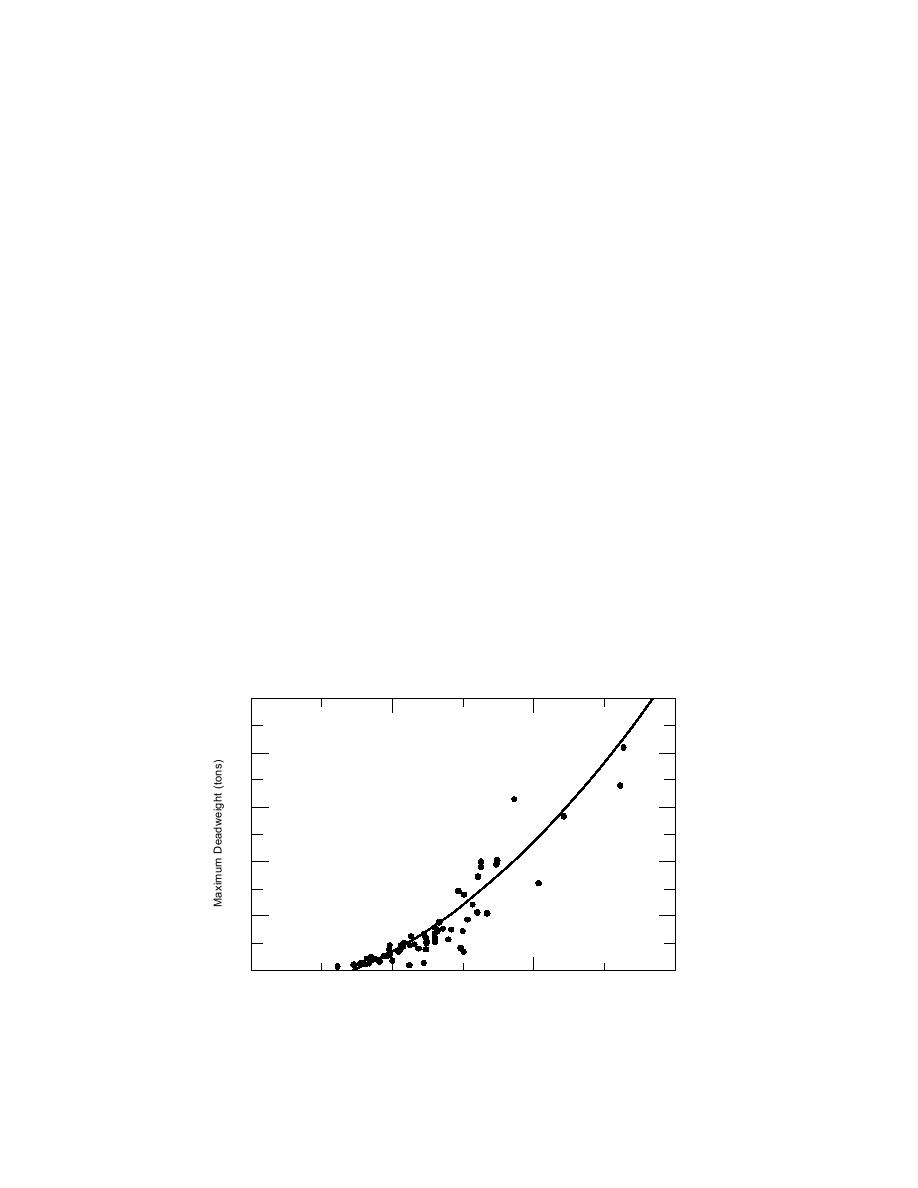
Dmax = 4545 + 18.81 L + 0.61 L2
ticular considerations of costs, icebreaking effi-
ciency or maneuvering. Auxiliary systems have
to be furnished so that a ship with an unconven-
where Dmax is the maximum deadweight and L is
tional bow can operate effectively in rubble ice as
the overall length of a vessel.
well as in level ice.
Bow shape
HULL FORMS
The bow shape of an icebreaker is characterized
by five basic design features, shown in Figure 7.
The primary consideration for the choice of hull
Flare angles contribute to the efficiency of
form of an icebreaking ship is the lowest power
icebreaking and ice block submergence, whereas
required to make progress in ice. Power in open
waterline angles contribute to clearing efficiency.
water, maneuvering and protection of propellers
Buttock angle and stem angle are associated with
from ice are some of the secondary considerations.
The following are factors that need to be considered
the flare and waterline angles, and these also con-
while selecting a hull form (Dick and Laframboise
tribute to breaking and submergence efficiencies.
1989):
The progression in the design of icebreaker
1. Performance in ice of all types.
bows over the last two decades has been to increase
2. Performance in open calm water.
flare angles, to reduce waterline angles and to re-
3. Performance in heavy weather in open
duce stem and buttock angles (Dick and Lafram-
water.
boise 1989). These changes have resulted from a
4. Maneuvering capability.
systematic series of model tests to produce a more
5. Overall dimensions.
efficient icebreaking bow. Over the years, the val-
6. Ease and cost of construction.
ues of stem angles of icebreakers have decreased
from 30 to 20.
7. Ease of repair and type of ship (e.g., cargo,
The selection of bow shape is greatly influenced
icebreaker, etc.).
by the mission profile of a polar ship. Different
Because some of the objectives listed above are
bow shapes that have been used are shown in Fig-
in conflict with each other, the best hull shape is
ure 8 (Dick and Laframboise 1989), and a brief dis-
one that takes into account the overall operations
of a vessel. Most of the sea-going icebreaking ships
cussion of each follows.
have been constructed with conventional bows.
Straight stem with parallel buttocks
However, there have been a few departures from
This shape has been commonly used for Soviet
this trend in the recent past, and a few ships have
and Finnish icebreakers since the 1950s, as dem-
been built with unconventional bows out of par-
3
50 x 10
40
2
Dmax = 4545 + 18.81L + 0.61L
30
20
10
0
100
200
300
Length (m)
Figure 6. Maximum deadweight vs. overall length of all vessels listed in Ap-
pendix B.
8



 Previous Page
Previous Page
